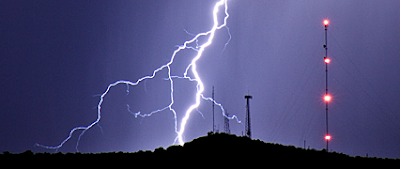In
2012, there was an increase of hurricanes and tropical storms during the months
of August, September, and October. Even though Hurricane Season officially
begins on June 1st, it doesn’t end until November 30th.
The last few months usually have the most storms, which can affect cell towers
and cell phone reception.
The
FCC reported that Hurricane Sandy knocked out 25% of the cell towers in the
affected regions. However, American Tower shared on their website that 48 American Tower sites responded by providing more
than 113 days of power to downed sites and delivered 100% performance.
There was a total of 15 named storms between August and
November in 2012 compared to only 4 named storms that occurred between May and
the end of July. David Goldman of CNN reported that, “As
a storm approaches, carriers ready a fleet of emergency equipment with some
peculiar, farm-like names: COWs (Cells On Wheels), COLTs (Cells On Light
Trucks), and GOaTs (Generators on Trailers).”
These are
temporary actions to solve a potential problem, but these precautions can help
when storms knock out cell towers. Most cell towers are strong enough to
withstand the winds of a hurricane; however, power outages are the biggest
threat to the towers. If you are looking to keep your cell tower up and running
during this hurricane season then use battery backups or backup diesel
generators just in case the battery does fail.
“In particularly bad storms, however, sometimes cells that
have gone dark become unreachable. That's when the cell phone companies roll
out the COLTs and COWs, forming makeshift cell towers in an attempt to maintain
constant coverage,” Goldman reported.


No comments:
Post a Comment